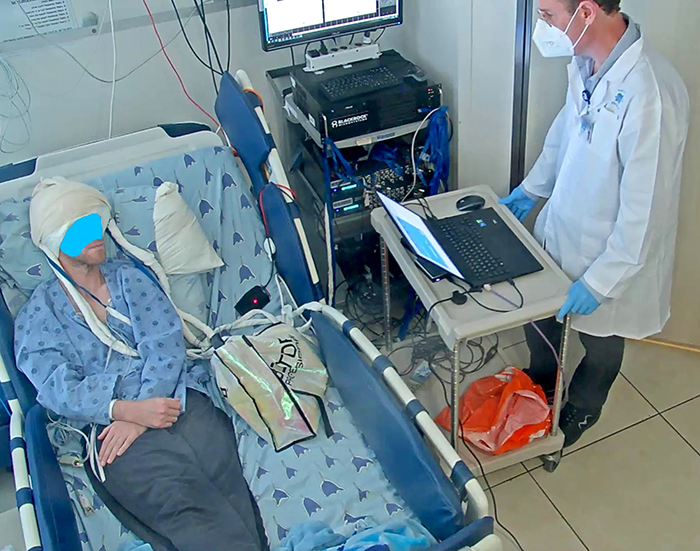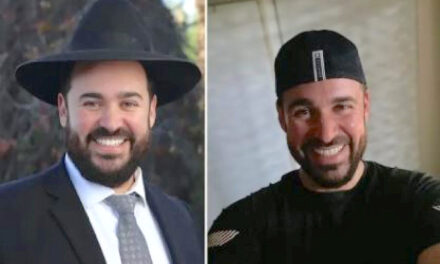An image from the experiment of the speech neuroprosthesis (a.k.a speech brain-computer interface). It shows a participant who is completely silent, with his mouth closed, imagining saying a syllable. The laptop “says” the syllable for him. Photo courtesy of Tel Aviv University.
A epilepsy patient in Israel recently “spoke” two syllables using only the power of thought, researchers from Tel Aviv University and Tel Aviv Sourasky Medical Center (Ichilov Hospital) announced on Tuesday, July 16.
The patient imagined saying one of two syllables, and electrodes implanted in his brain transmitted the electrical signals to a computer, which then vocalized the syllables.The results of the groundbreaking study were published in the prestigious journal Neurosurgery.
Offers Hope
The findings offer hope for those unable to speak due to conditions such as ALS, brainstem stroke or brain injury, the researchers said.
“In this experiment, for the first time in history, we were able to connect the parts of speech to the activity of individual cells from the regions of the brain,” said lead researcher Dr. Ariel Tankus of Tel Aviv University’s School of Medical and Health Sciences and Tel Aviv Sourasky Medical Center.
First Steps
“This allowed us to distinguish between the electrical signals that represent the sounds /a/ and /e/. At the moment, our research involves two building blocks of speech, two syllables. Of course, our ambition is to get to complete speech, but even two different syllables can enable a fully paralyzed person to signal ‘yes’ and ‘no,’” he said.
In the first stage of the experiment, with the depth electrodes already implanted, researchers asked the patient to say two syllables out loud: /a/ and /e/. They recorded the brain activity as he articulated those sounds. Using deep learning and machine learning, the researchers trained artificial intelligence models to identify the specific brain cells whose electrical activity indicated the intent to say those syllables.
Once the computer learned to recognize the pattern of electrical activity associated with these two syllables in the patient’s brain, he was asked to only imagine that he was saying /a/ and /e/.
The computer then translated the electrical signals and played the pre-recorded sounds of /a/ or /e/ accordingly.
“Our study is a significant step toward developing a brain-computer interface that can replace the brain’s control pathways for speech production, allowing completely paralyzed individuals to communicate voluntarily with their surroundings once again,” said Tankus.
Also conducting the study was Dr. Ido Strauss of Tel Aviv University’s School of Medical and Health Sciences and director of the Functional Neurosurgery Unit at Ichilov Hospital. The study was supported by a grant from the Israel Ministry of Innovation, Science and Technology.












